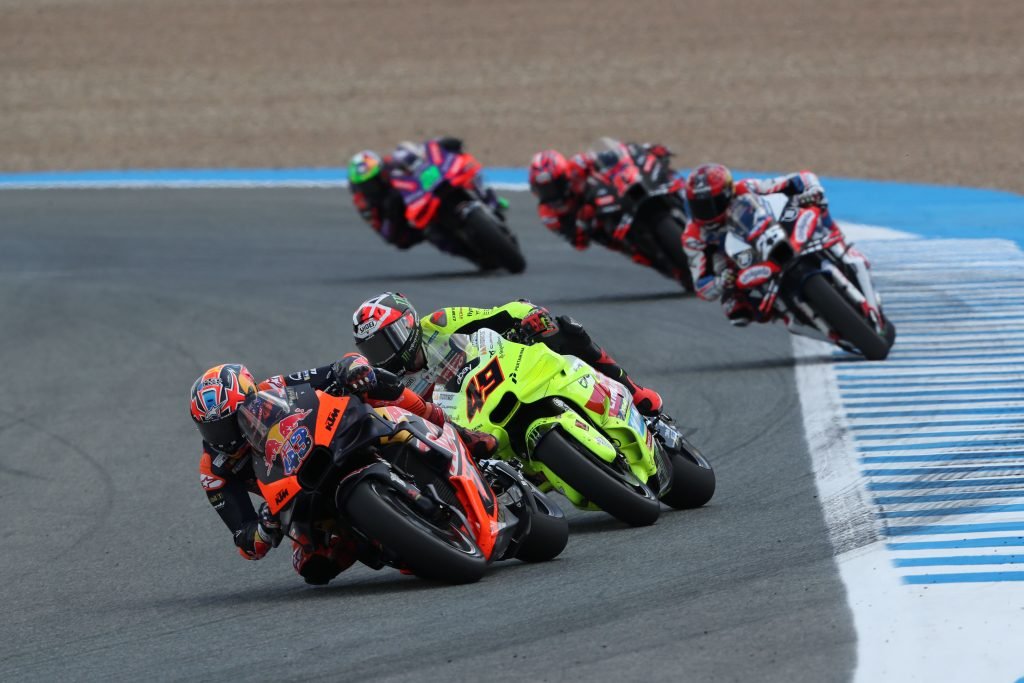

Gone again will be the 1000cc engines, with capacity reduced to 850cc, and bikes are likely to be slower.
However, a host of new rules are likely to improve the show by providing/restoring opportunities for overtaking, such as smaller front fairings and the total ban of ride height devices.
Engines
As well as smaller capacity overall, engines will be restricted to maximum bore of 75mm, down from 81mm, making for reduced top speed and performance.
They will remain four-stroke only, with four cylinders (no configuration has been specified, noting Yamaha continues to run inlines as opposed to Vs), and, according to MotoGP, be more road-relevant as a result of the changes.
The maximum engine allocated has been reduced from seven to six for each entry per season, although that is a figure based on a 20-round calendar.
If, as is the case this year, there are 21 or 22 rounds, then seven engines will be allowed, noting that each entry is comprised of two physical motorcycles at each event.
Manufacturers in Concession Rank D, the worst-performing tier under the recently introduced concession system, will continue to be allowed two additional engines per entry.
Fuel
As previously announced, MotoGP will implement 100 percent sustainable fuel from 2027 (currently 40 percent).
Tank capacity will shrink from 22 litres to 20, and riders will be allowed to use 11 litres during Sprints.
Aerodynamics
“Aerodynamics will be reduced and more tightly controlled from 2027, with the aim of minimising their negative effects,” explains MotoGP.
The width of the top of the front fairing will be 50mm narrower and the nose pushed back 50mm.
The rear end of the bike will also become part of the homologation, and allowed to only be updated once per season, matching the rules which currently apply to front fairings.
Ride height devices
Having crept into MotoGP several years ago, pioneered by Ducati, all ride height devices will be banned in 2027. That includes ‘holeshot’ devices used at race starts only.
Riders were split on the merits of the ‘devices’, with those not on Ducatis generally opposed for reasons of safety, and the difficulty they created in overtaking.
Front ride height devices had already been banned from last year.
GPS data
GPS data from all riders will be available to all teams after each session, with MotoGP reasoning that “Providing data to all competitors offers better opportunities to progress for the less performing teams and riders, and at a controlled cost.”
Concessions
The new-for-2024 concession system, which assigns each manufacturer to one of four tiers rather than a binary concession-or-not position, will continue.
However, all manufacturers will start the 2027 season in Rank B (second-best performance and hence second-lowest assignment of concessions), before being reassessed mid-season.
Other
Minimum bike weight will be 153kg and total number of gearbox ratios will be reduced to 16, plus for different primary drive ratios, for each season.
Overall, MotoGP is proclaiming that the suite of new rules will make the category “safer, more sustainable, and even more spectacular than ever.”
The French MotoGP takes place this weekend at Le Mans.





















Discussion about this post